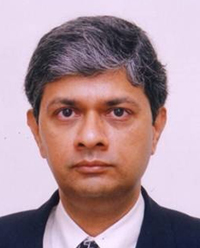Avinash Kalia, Associate
Director – MF, PricewaterhouseCoopers (PWC) India, believes that the recent SEBI
measures will act as a positive signal for overseas mutual fund players to continue
looking for acquisition opportunities in the Indian mutual fund industry.
 We have seen a number of acquisitions in
the industry. Do you foresee further consolidation in the industry? Given the
sea change in the regulatory environment in the last three years, what are
overseas players expecting?
We have seen a number of acquisitions in
the industry. Do you foresee further consolidation in the industry? Given the
sea change in the regulatory environment in the last three years, what are
overseas players expecting?
The regulator has recently taken a policy stance that is encouraging and would assist in the renewed growth/profitability of the industry. Given the positive regulatory moves, overseas acquirers may continue to evaluate acquisition opportunities in the Indian AMC space. There is an increasing expectation of renewed growth from the sector especially given the positive regulatory moves regarding penetration into cities beyond the top 15 and RGESS etc.
Do you think new players will be
cautious to enter the industry given the fact that break even time has now
increased compared to earlier days?
The
recent positive regulatory changes may bring back the notional break-even
period to what had been anticipated earlier. Also, there is yet room for AMCs
that specialize on non vanilla products (perhaps ETFs etc.).
Do you think hiking expense ratio and making
expenses fungible will bring investors into mutual funds? There is a view that
investor’s entry and exit from mutual funds is only a function of market
performance.
Hiking
expense ratios will make resources available to better incentivize the
distribution channels. Of late one of the major challenges to growth has been
the incentivisation of distribution. The recent SEBI circular offers a way
forward. AMCs would be able to examine allocation of available resources to
maximize the incentives to the distribution channels.
Your report - Is there a silver lining? said
that AMCs need to diversify their sources of revenues. What kind of businesses can
AMCs step into?
Investment Advisory for offshore funds - there is a large amount of capital invested in India from overseas; Indian asset managers with a proven track record, necessary infrastructure and network could do well to tap into this segment, which could be a profitability differentiator, with the potential of returning higher margins for the players involved. This in turn would give them greater financial flexibility to invest in targeting untapped investor segments within India. However, there are challenges in this segment too and not every AMC has the ingredients to enter and succeed. It takes a few key ingredients - a global network, brand and presence, research capabilities, investor connect as well as management resources, time and the financial ability to invest over a long time frame. Other than these issues, there are matters pertaining to tax inefficiencies given that AMCs doing so would be managing offshore funds from India.
SEBI
has also considered the management of funds Alternative Investment Funds (AIF)
by AMCs – this is an area that could develop and needs to be explored.
What kind of hurdles do you foresee MFs
could face in attracting investors beyond the top 15 cities?
The biggest hurdle might be a lack of clear understanding of the product(s) and the process associated with investing in a MF product. Further there would be issues around access to information, advisor/distributor for entry as well as exit. To begin with a whole new class of distributor has to be trained and encouraged. Having said that, there are incentives created by the regulator to encourage these steps.
How big is the threat from direct share
class to distributors? Do you expect hordes of investors to shift to a direct
plan?
The facility to invest directly has been available for a few years now and the share of investors investing through that route rather than via a distributor has steadily gone up into double digits. However there is no reason for this to increase at an en-masse scale. The share will certainly creep upwards over the next years as product understanding increases and internet availability improves.
Certain section of industry watchers are of the view that the measures announced by SEBI are more helpful for AMCs than investors. What are your comments?
In the long term if the AMCs are strengthened the investors would ultimately benefit. Also – SEBI has mandated that AMCs share cost information with the investors – presumably a huge differential will be noticed and questioned by the investors.
Do you think trustees of mutual fund
houses have been active in taking corrective steps when it comes to fund
performance? The regulator had said that it is going to act tough on poor fund
performance…
The
idea of a structure of a Trustee and an AMC was to create such a mechanism of
checks-and-balances. However the regulator believes that this may not have
happened adequately or rigorously. An across-the-board comment cannot be made.
RGESS will be through ETFs. ETFs as a
category are largely bought by HNIs and large investors. Do you think retail
investors would go through the process of opening demat accounts for investing
in RGESS? Do you think first time investors in equities would be comfortable
buying ETFs?
The
fundamental idea is to bring in small investors from all corners of the country
into the capital markets. Further such channeling of savings is thought to be
better done through mutual funds rather than through direct purchases of equity
shares. This is on the basis that a fund manager has a lot many more resources
at his hand to take an educated decision than the average investor in smaller
towns. Entry through ETFs will make the investing decision even simpler as one has
to simply take a view on the index and not on the fund management team as all
ETFs would perform similarly.




